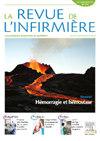["零重抑制 "目标]。
Q4 Nursing
引用次数: 0
摘要
在护理智障患者时,束缚往往是一种埋伏。在热罗姆-勒让医院(Institut Jérôme Lejeune),护理团队采取了一系列旨在帮助病人和护理人员的措施,无论是减轻护理带来的痛苦,还是减轻护理引发的忧虑。经过一年的实施,重度束缚的数量已大幅下降。本文章由计算机程序翻译,如有差异,请以英文原文为准。
["Zero heavy restraint" objective].
When caring for a patient with an intellectual disability, restraint is often an ambush. At the Institut Jérôme Lejeune, the nursing team has put in place a series of measures designed to help both patient and caregiver, whether in managing the pain induced by care or the apprehension it provokes. After a year's implementation, the number of heavy restraints has fallen significantly.
求助全文
通过发布文献求助,成功后即可免费获取论文全文。
去求助
来源期刊

Revue de l''Infirmiere
Nursing-Nursing (all)
CiteScore
0.50
自引率
0.00%
发文量
151
期刊介绍:
Fondée en 1951 par la Croix-Rouge française, la Revue de infirmière est la plus ancienne des publications de la discipline. Concrète et technique, elle est en prise directe avec la pratique quotidienne des infirmières ; elle leur apporte ainsi toute la formation et le information dont elles ont besoin pour exercer leur métier. Chaque mois, la Revue de le infirmiere vous propose 4 rubriques incontournables pour votre exercice quotidien : Actualités : événements majeurs Formation : dossier complet sur une pathologie ou un type de soins, son diagnostic et son protocole. Pratique : rubriques régulières de diagnostic, protocole, observance, relation de aide, soins à domicile...
 求助内容:
求助内容: 应助结果提醒方式:
应助结果提醒方式:


